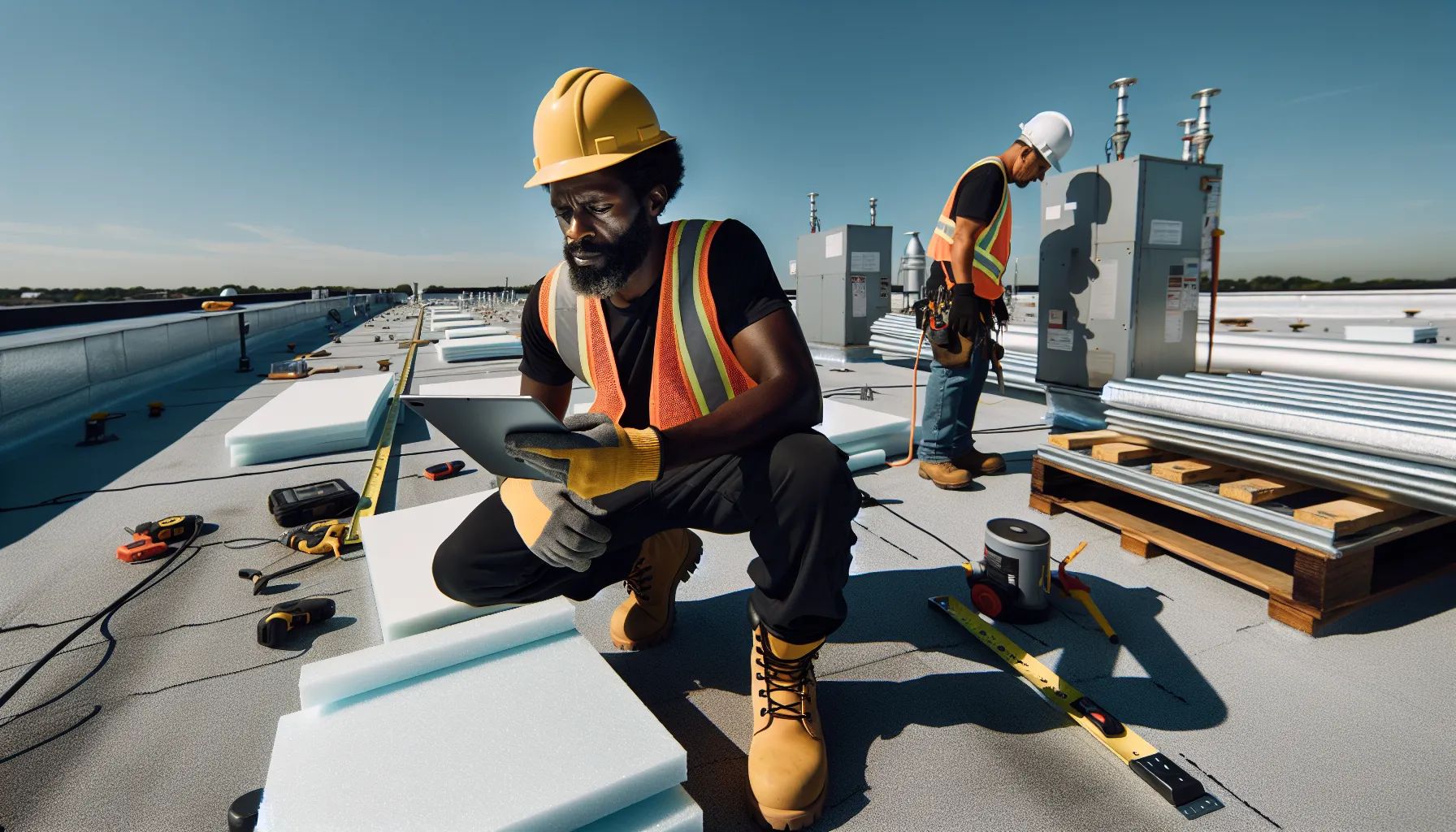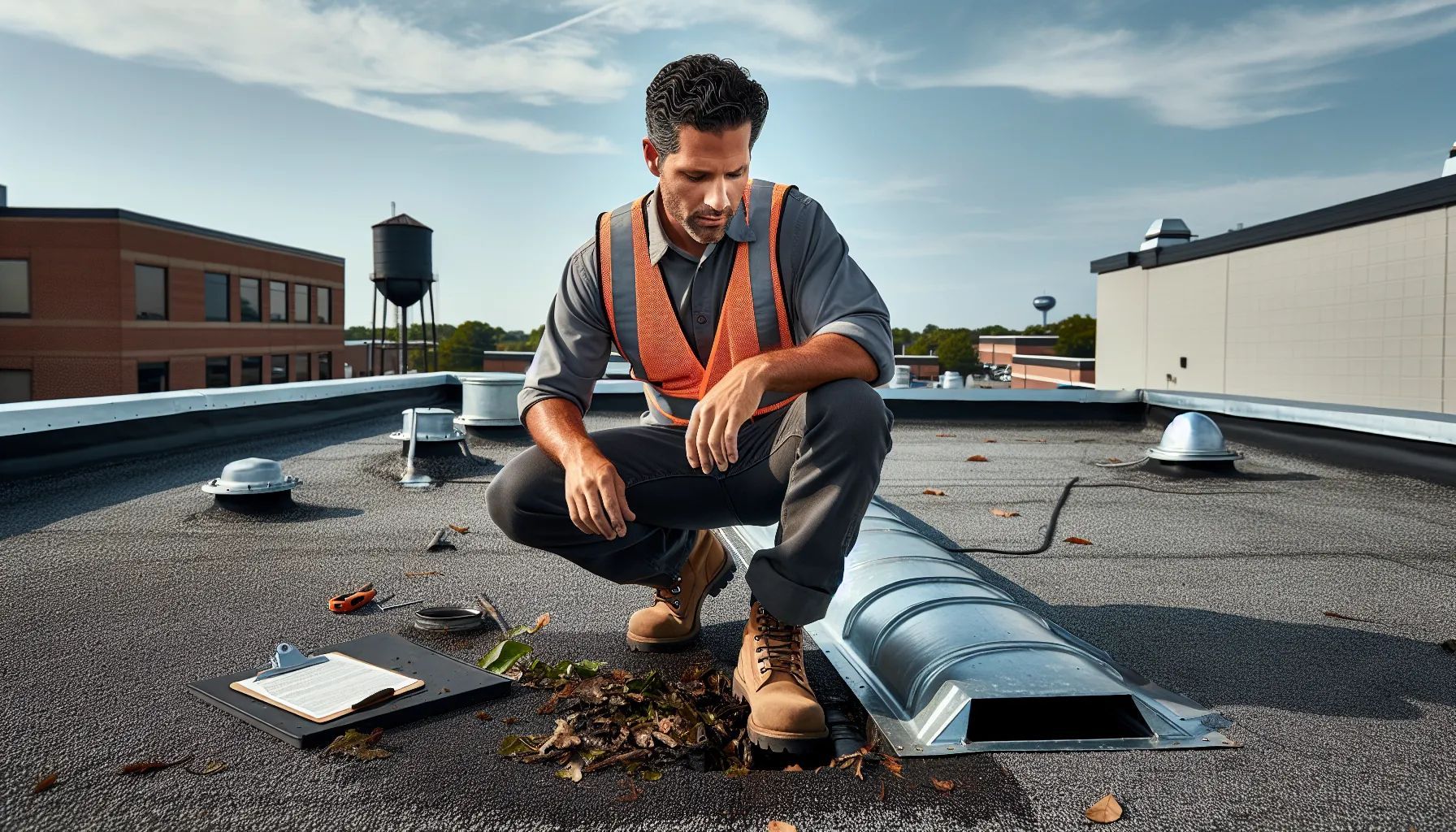Do Metal Roofs Fade in Color?
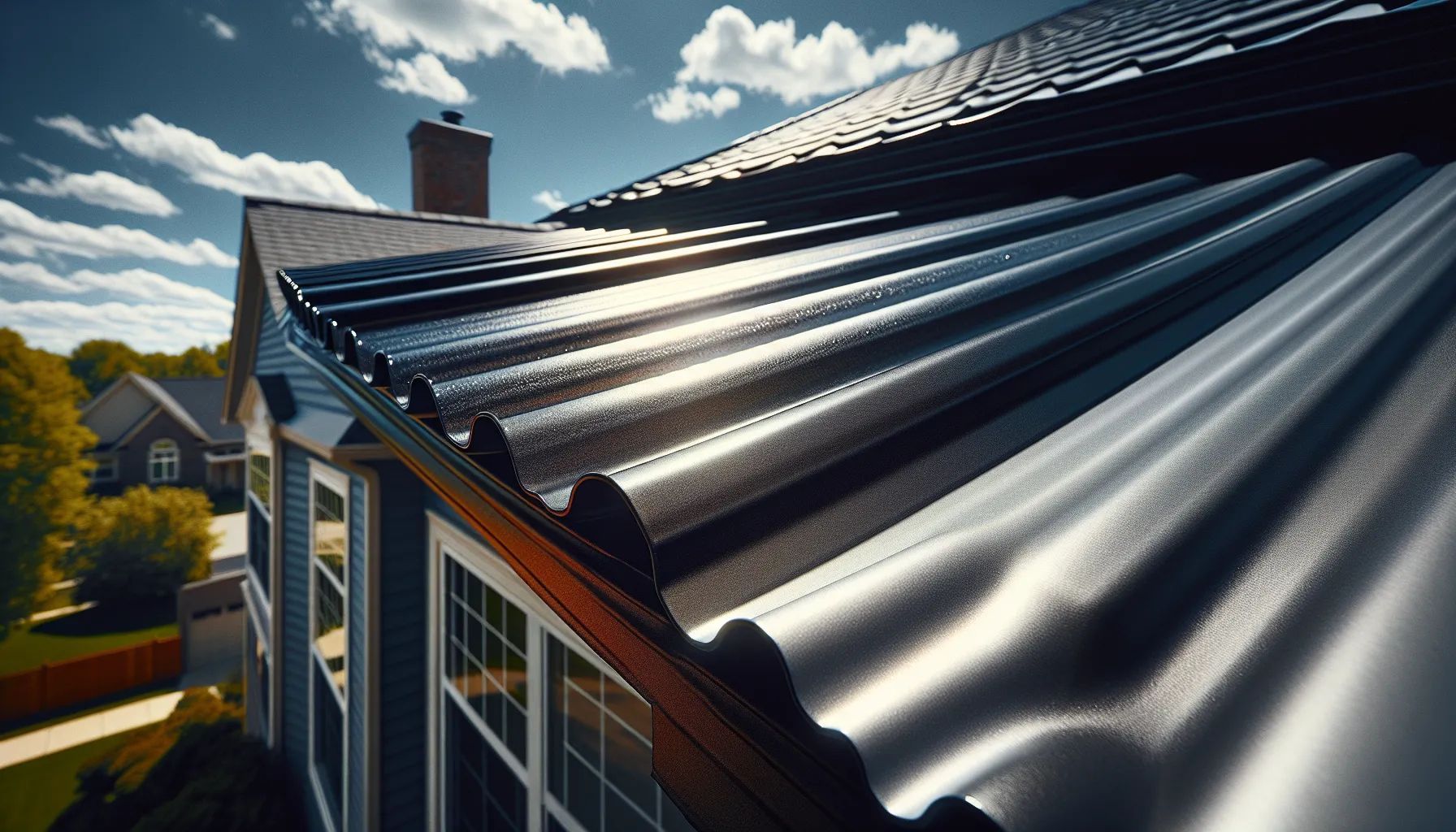
Metal roof color fading describes the gradual loss of color intensity or vibrancy that occurs over years of exposure. Instead of the sharp, rich hue you see on a new roof, the surface begins to appear dull, washed out, or lighter in tone. This change primarily affects the painted or coated surfaces rather than the metal substrate itself.
The fading process doesn't happen overnight. It's a slow transformation driven by the interaction between the roof's coating and its environment. Over months and years, the pigments and resins in the paint begin to break down, leading to a visible shift in appearance. While all metal roofs are susceptible to some degree of color change, the rate and severity vary widely.
It's important to note that fading doesn't necessarily mean your roof is failing structurally. The metal underneath typically remains sound and protective. But, the aesthetic impact can be significant, especially if curb appeal matters to you or if the fading is uneven across different sections of the roof.
Why Metal Roofs Experience Color Fading
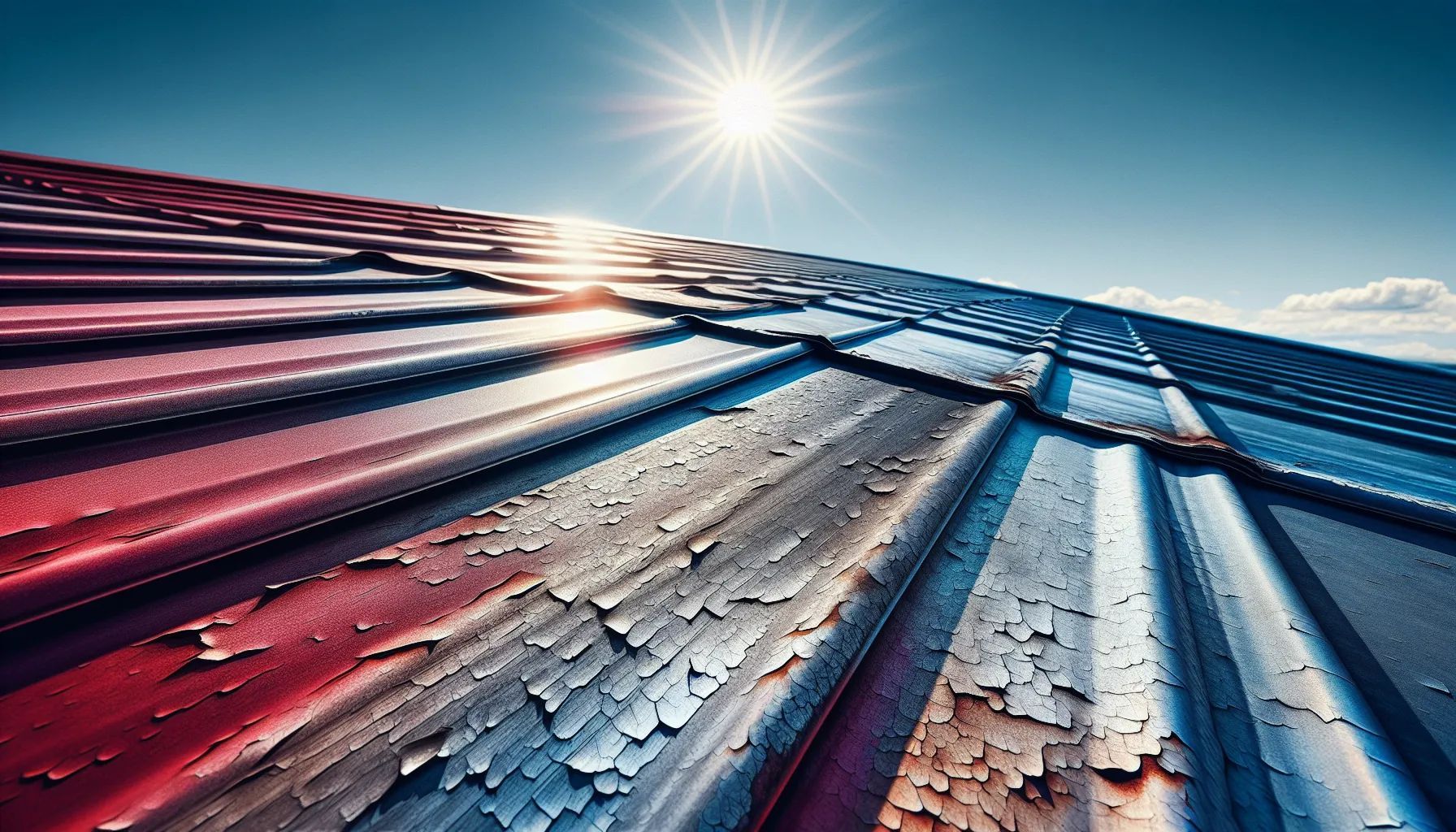
Several forces work together to strip color from metal roofing over time. Understanding these causes helps clarify why some roofs fade faster than others and what you can do to slow the process.
UV Radiation and Sun Exposure
The sun is the primary culprit behind metal roof fading. Ultraviolet radiation penetrates the paint layer and breaks down both the pigments that give the roof its color and the resin that binds those pigments to the metal. This chemical degradation is relentless, every sunny day contributes a little more damage.
UV rays are especially destructive because they carry high energy that disrupts molecular bonds. Over time, the pigments lose their ability to reflect specific wavelengths of light, which is what gives the roof its color. The resin, which acts as a protective binder, also becomes brittle and less effective. The result is a faded, chalky appearance that can become noticeable after just a few years in high-exposure areas.
Roofs that face south or west typically experience the most intense and prolonged sun exposure, leading to faster fading on those surfaces compared to shaded or north-facing sections.
Environmental and Weather Factors
Weather plays a supporting role in accelerating color loss. Rain, snow, humidity, and temperature swings all contribute to the breakdown of paint coatings. Rain can wash away protective layers and introduce contaminants, while humidity promotes chemical reactions that degrade the coating from within.
Acid rain and pollution are particularly harmful. Industrial pollutants and airborne chemicals can react with the paint, altering its chemical structure and speeding up the fading process. Coastal environments introduce salt spray, which is corrosive and can damage both the paint and the metal underneath if the coating is compromised.
Temperature fluctuations cause the metal to expand and contract, which stresses the paint layer. Over many cycles, this can lead to micro-cracking and peeling, exposing more of the coating to the elements and accelerating fading.
Paint Quality and Coating Systems
Not all metal roof paints are created equal. The quality of the coating system is one of the most critical factors in determining how quickly a roof will fade. High-quality paints use advanced resin systems and inorganic ceramic pigments, which are far more resistant to UV degradation than organic pigments.
Organic pigments, while vibrant and cost-effective, are less stable under UV exposure. They break down faster, leading to quicker and more noticeable fading. Inorganic pigments, on the other hand, are chemically stable and retain their color much longer, even under harsh conditions.
The resin system, often PVDF (polyvinylidene fluoride) or other advanced formulations, also plays a key role. PVDF coatings are known for their durability and resistance to chalking and fading. Cheaper coatings, such as polyester or acrylic, offer less protection and fade more rapidly.
How Much Fading Can You Expect?
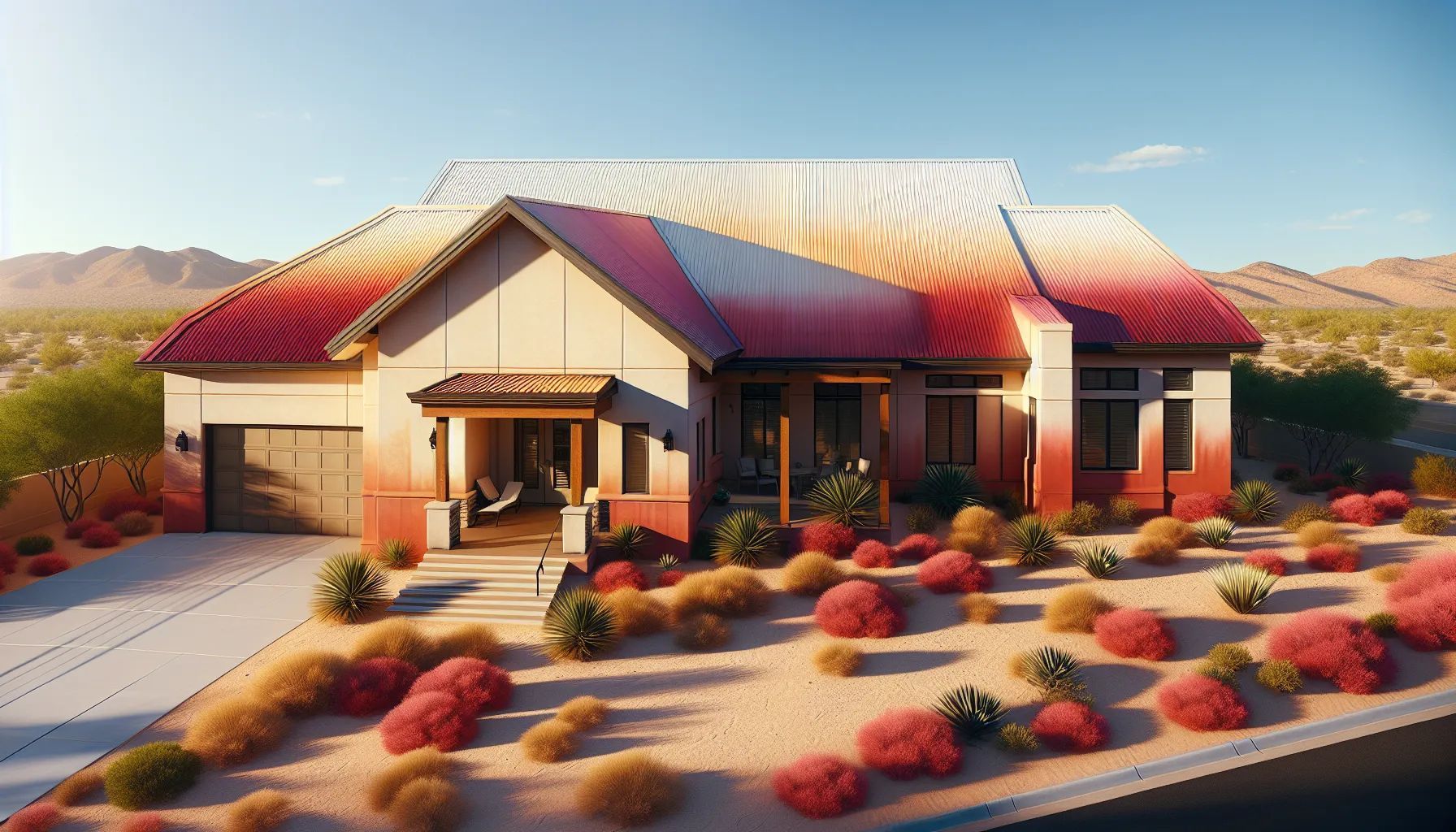
The amount of fading you'll see on a metal roof varies widely depending on several factors, but some general patterns emerge. In most cases, you can expect a subtle, gradual shift rather than a dramatic color change overnight.
Bright, vivid colors, such as reds, blues, and greens, made with organic pigments tend to fade the fastest. These colors can lose a noticeable amount of vibrancy within five to ten years, especially in sunny climates. Earth tones and neutral shades like tan, gray, and white, which often use inorganic pigments, hold their color much better and may show minimal fading even after decades.
In environments with intense sunlight, such as the southwestern United States, noticeable fading can occur within just a few years. Coastal areas with high humidity and salt exposure also see faster degradation. Conversely, roofs in temperate climates with moderate sun exposure and lower pollution levels may retain their original appearance for much longer.
It's also worth noting that fading is often uneven. Areas with more sun exposure will fade faster than shaded sections, leading to a patchy appearance over time. This unevenness can be more visually distracting than uniform fading across the entire roof.
Factors That Influence Fading Rates
Several variables determine how quickly a metal roof will lose its color. By understanding these factors, we can better predict and manage the fading process.
Geographic Location and Climate
Where you live has a huge impact on how fast your roof fades. Regions with intense, year-round sunlight, such as Texas, Arizona, and Florida, see much faster fading compared to areas with milder climates. High altitude locations also experience stronger UV radiation due to thinner atmospheric filtering.
Pollution levels matter, too. Urban and industrial areas introduce more airborne chemicals that can react with the paint. Coastal regions add the complication of salt spray, which is corrosive and accelerates coating breakdown. In contrast, rural areas with clean air and moderate sun exposure tend to preserve roof color longer.
Temperature extremes and rapid weather changes stress the coating system. Roofs in areas with wide daily temperature swings or frequent freeze-thaw cycles experience more expansion and contraction, which can lead to micro-cracking and faster fading.
Roof Color Selection
The color you choose for your metal roof significantly affects how noticeable fading will be over time. Lighter colors like white, beige, and light gray naturally show less fading because the color change is more subtle. These shades also reflect more sunlight, which reduces heat buildup and UV damage.
Darker and more vibrant colors, especially those made with organic pigments, fade more noticeably. A bold red or deep blue may shift to a lighter, duller version of itself within a few years. Neutral tones with inorganic pigments are your best bet if long-term color retention is a priority.
Some manufacturers offer color lines specifically designed for fade resistance, using advanced pigments and coating technologies. Choosing from these options can make a real difference in how your roof looks decades down the line.
Material Type and Finish
The type of metal and the finish applied to it also influence fading rates. Steel and aluminum roofs with premium coatings like PVDF or ceramic-infused paints resist fading much better than those with basic polyester coatings.
The finish itself, whether matte, glossy, or textured, can affect how light interacts with the surface and how visible fading becomes. Matte finishes tend to show less obvious fading because they scatter light more diffusely, while glossy finishes can highlight color changes more clearly.
Some metal roofing products come with warranties that specifically address color fading, guaranteeing a certain level of color retention over a set period. These warranties are a good indicator of the coating quality and the manufacturer's confidence in their product.
Preventing and Minimizing Color Fading
While you can't stop fading entirely, you can take steps to slow it down and keep your metal roof looking good for as long as possible.
Choosing Fade-Resistant Coatings
The single most effective way to minimize fading is to choose a metal roof with a high-quality, fade-resistant coating from the start. Look for products that feature PVDF coatings, which are widely recognized as the gold standard for color retention and durability. These coatings contain fluoropolymer resins that resist UV breakdown far better than standard polyester or acrylic paints.
Inorganic ceramic pigments are another key feature to look for. These pigments are chemically stable and don't degrade under UV exposure the way organic pigments do. Many premium metal roofing lines now offer color options formulated with these advanced pigments, often backed by warranties of 30 years or more for color retention.
Some manufacturers also offer specialty coatings with built-in UV inhibitors and self-cleaning properties that help shed dirt and pollutants, keeping the roof cleaner and reducing chemical exposure to the paint.
Roofs and Maintenance Practices
Regular maintenance can extend the life and appearance of your metal roof. Keeping the surface clean helps prevent the buildup of dirt, algae, and pollutants that can accelerate coating breakdown. We recommend washing the roof at least once a year with mild soap and water, avoiding harsh chemicals or abrasive tools that can damage the coating.
Debris like leaves, branches, and dirt should be cleared regularly, especially from valleys and gutters where moisture can accumulate. Standing water or trapped moisture can promote chemical reactions that degrade the paint.
Professional inspections every few years can catch early signs of coating failure, such as chalking, peeling, or localized fading. Addressing these issues early can prevent more extensive damage and preserve the roof's appearance and performance.
When to Consider Repainting Your Metal Roof
If your metal roof has faded significantly and the appearance bothers you, or if the coating has begun to fail and expose the metal, repainting can be a smart option. Repainting not only restores the roof's original vibrancy but also adds a new protective layer that can extend the roof's lifespan.
Before repainting, it's important to assess the condition of the existing coating and the metal underneath. If the coating is chalking, peeling, or showing signs of rust, proper surface preparation is critical. This typically involves cleaning, removing loose paint, treating any rust, and priming the surface before applying the new topcoat.
Choose high-quality, UV-resistant paints designed specifically for metal roofing. PVDF or ceramic-based coatings are ideal for maximum durability and color retention. While repainting is an investment, it can be more cost-effective than replacing the entire roof, especially if the metal substrate is still in good shape.
Hiring experienced professionals is key to a successful repaint. Proper application techniques, including spray equipment calibrated for even coverage, ensure a long-lasting, attractive finish. A well-done repaint can give your roof another 15 to 20 years or more of vibrant color and protection.
Conclusion
Metal roofs do fade over time, primarily due to UV radiation, environmental exposure, and the quality of the coating system. But, the extent and speed of fading are not uniform, they depend heavily on factors like geographic location, roof color, paint quality, and maintenance practices.
By selecting fade-resistant coatings with PVDF resins and inorganic pigments, choosing neutral or lighter colors, and committing to regular maintenance, we can significantly slow the fading process and keep a metal roof looking attractive for decades. And if fading does become noticeable, repainting with high-quality products offers a practical and cost-effective way to restore both appearance and protection.
Eventually, understanding the causes and influences of color fading empowers us to make smarter choices, whether we're installing a new roof or caring for an existing one. With the right approach, a metal roof can maintain its curb appeal and performance far longer than many other roofing materials.
Do metal roofs fade in color over time?
Yes, metal roofs do fade in color over time due to UV radiation, weather exposure, and paint quality. However, the rate and severity vary based on coating type, climate, and roof color. High-quality coatings can minimize fading significantly.
What causes metal roofs to lose their color?
UV radiation is the primary cause, breaking down pigments and resins in the paint. Environmental factors like acid rain, pollution, salt spray, and temperature fluctuations also accelerate coating degradation, leading to visible fading over years.
How long does it take for a metal roof to fade?
Fading timelines vary widely. Bright colors with organic pigments may show noticeable fading within five to ten years, especially in sunny climates. Neutral tones with inorganic pigments can retain color for decades with minimal change.
What is the best metal roof color to prevent fading?
Lighter, neutral colors like white, beige, and light gray fade less noticeably than dark or vibrant colors. These shades often use inorganic pigments that resist UV breakdown better and reflect more sunlight, reducing heat damage.
Can you repaint a faded metal roof?
Yes, repainting a faded metal roof is possible and can restore its appearance while adding protective layers. Proper surface preparation and using UV-resistant PVDF or ceramic coatings ensure durability and extended color retention for 15–20 years.
Does metal roof fading affect structural integrity?
No, color fading typically affects only the painted surface, not the metal substrate underneath. The roof usually remains structurally sound and protective. However, severe coating failure can eventually expose metal to corrosion if left unaddressed.
